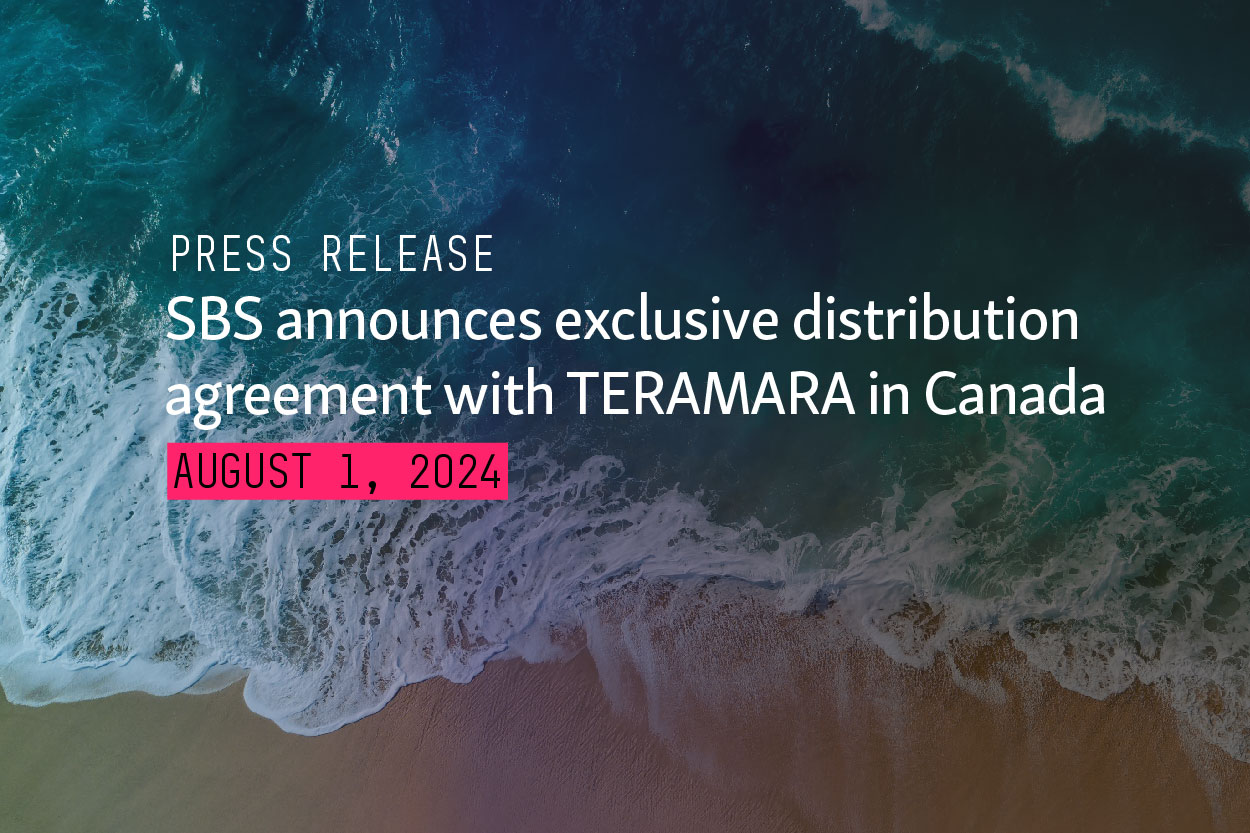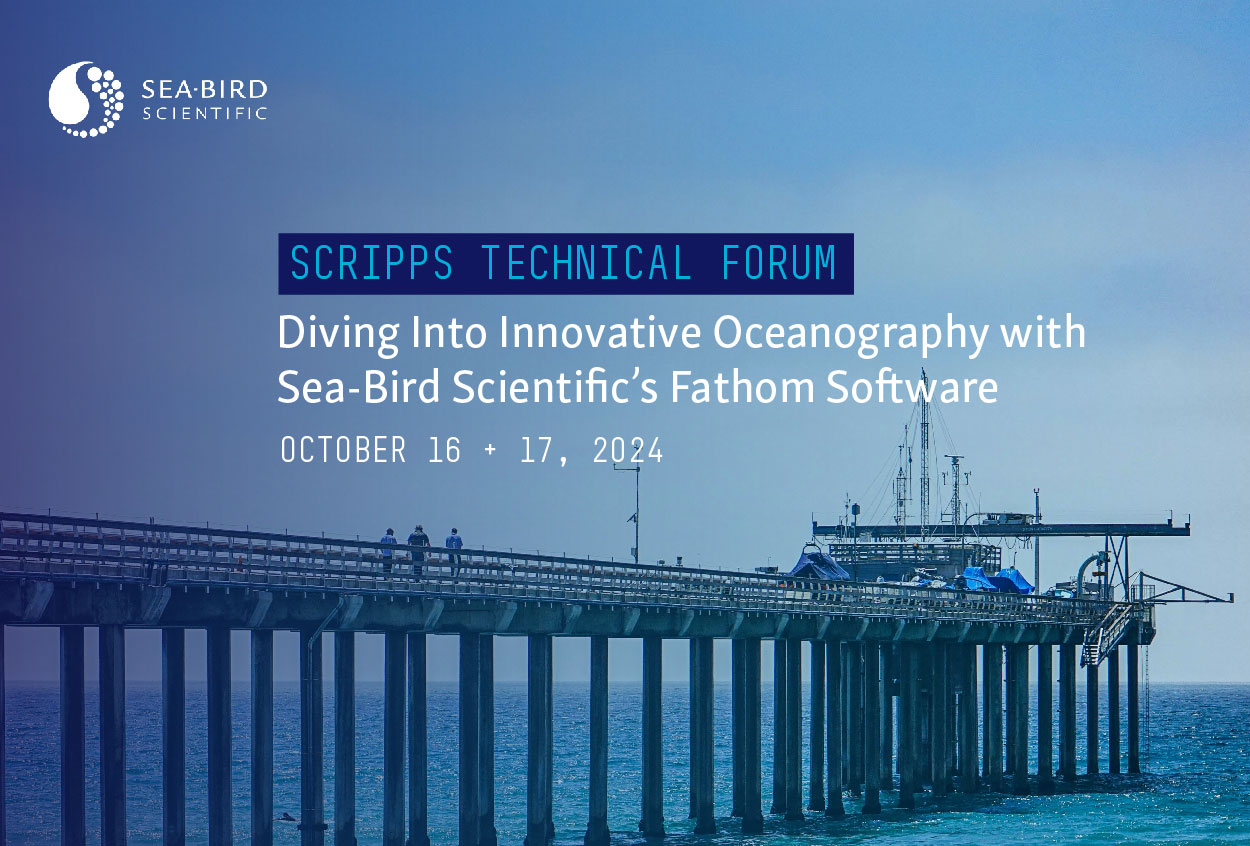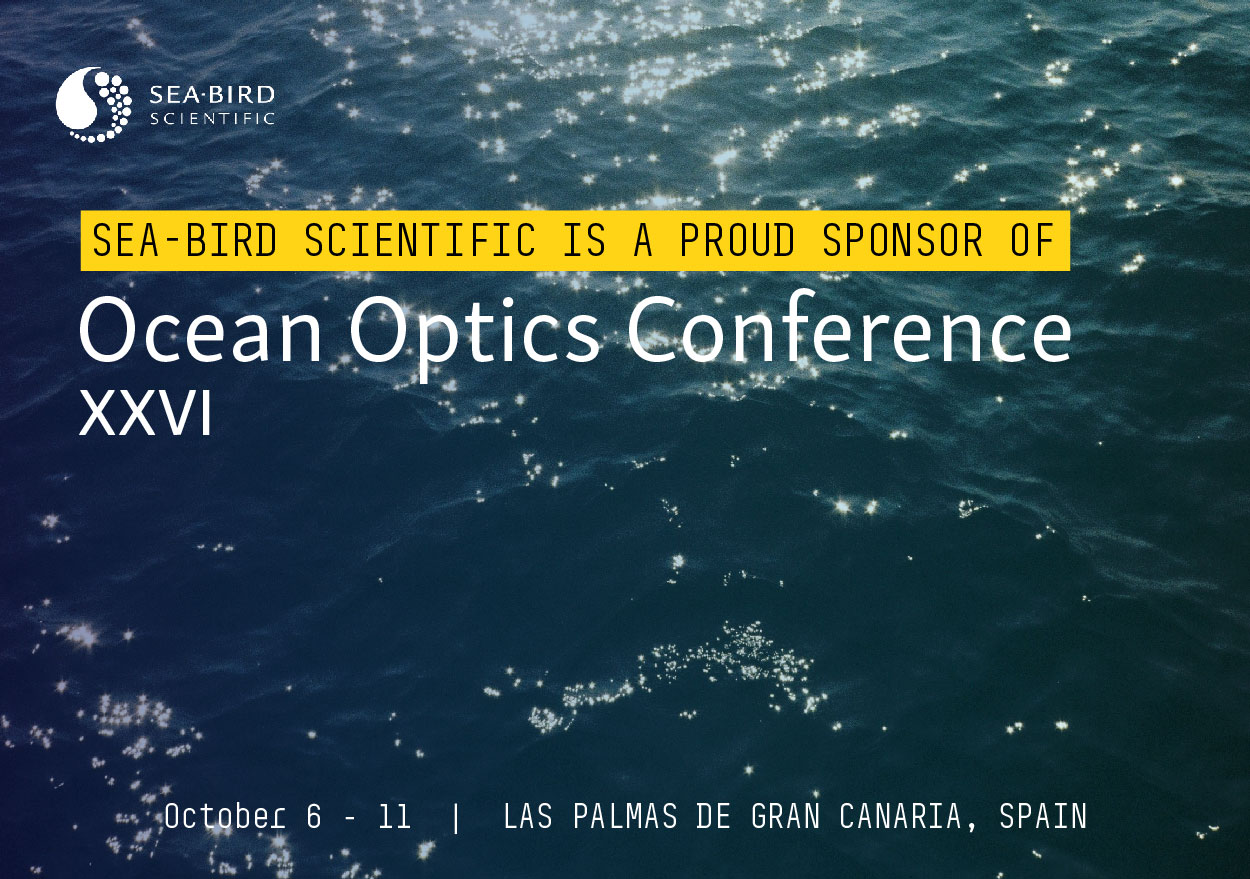Moored pH Ocean Monitoring Systems
Our Moored pH Ocean Monitoring Systems
Ocean pH plays a critical role in the health of the global ocean due to the short timescales relevant to biological activity. With recent studies highlighting the impacts of acidification on the carbon cycle as well as on coral, shellfish, phytoplankton, and zooplankton, long-term monitoring of local pH conditions is vital to support data-based decisions regarding human behavior and conservation efforts (NOAA Ocean Acidification).
Sea-Bird Scientific recognizes the need for robust, reliable in-situ and high-quality moored pH instruments. We offer two solutions that are state-of-the-art, multi-parameter systems with integrated flow paths that provide better correlation of measurements and sampling, as well as manufacturer-supplied software that allows the user to set up the sensor, monitor graphical data in real time, upload stored data, and process that data.
Deep SeapHOx™ V2
The Deep SeapHOx™ V2 is suited for long-term deployments in a range of environments, from coastal regions to the deep ocean offshore.
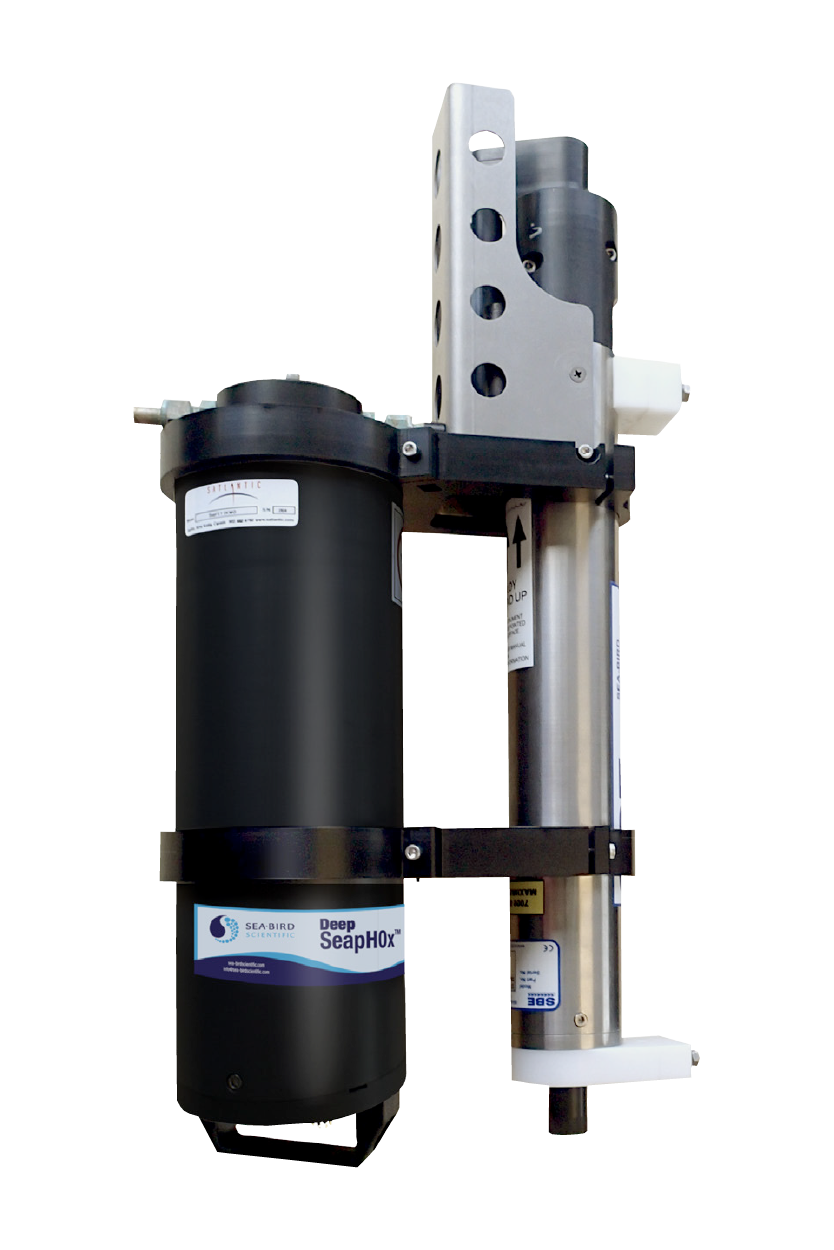
The Deep SeapHOx™ V2 integrates the Deep SeaFET pH Sensor with the SBE 37 SMP-ODO MicroCAT CTD+DO sensor to provide a multiparameter biogeochemical monitoring tool for ocean acidification and other physical and biological ocean processes, which is available in either 350 or 2000 meter depth ratings depending on the application. The Deep SeapHOx™ V2 allows for simultaneous data collection of pH with the critical oceanographic and biological measurements of temperature, salinity, pressure, and oxygen.
The Deep SeapHOx™ V2 utilizes internal memory and power provided by batteries and/or external power to operate autonomously for a long-term deployment. It has an integrated pump that operates each time the system collects the measurements, flushing the measured water and quickly moving new water into the flow path to achieve measurements at the highest accuracy.
The Deep SeapHOx™ V2 utilizes a solid-state ion selective field effect transistor (ISFET) that is adapted for use in surface to high pressure environments. Unattended, the Deep SeapHOx™ V2 can measure high-quality data and retain stability for at least 1 year for all integrated sensors. This timeline reduces overall field servicing costs and data gaps.
Features and Applications
- multi-parameter CTD-DO-pH at depths up to 2000m | Case Study
- long-term stability
- ocean acidification
- climate research
- marine biology
- carbon cycle
- deoxygenation
- ocean monitoring
- deep sea corals
- food web research
HydroCAT-EP V2 | Long-term Monitoring in Both Saltwater and Freshwater
The Sea-Bird Scientific HydroCAT-EP V2 is a moored CTD instrument suited for long-term deployments in biologically rich, coastal environments. The HydroCAT-EP V2 can be utilized in both saltwater and freshwater.
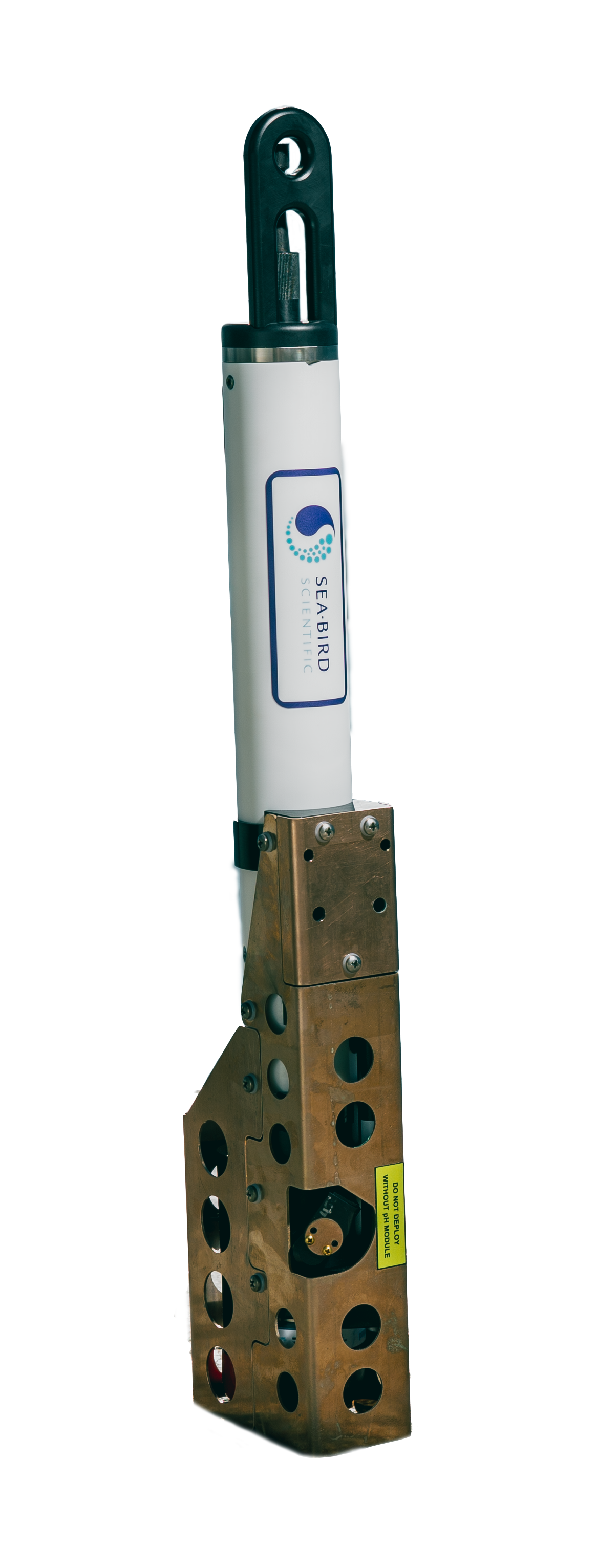
The HydroCAT-EP V2 integrates seven field-proven sensors that are factory and/or field-calibrated (pH only) to provide optimal accuracy and long-term data stability. With optional optical dissolved oxygen, chlorophyll, turbidity, and pressure sensors, the HydroCAT-EP V2 provides a solution for any ocean, coastal, or freshwater application. It has an integrated pump that operates each time the system takes the measurements, flushing the measured water and quickly moving new water into the flow path to achieve measurements at the highest accuracy.
The HydroCAT-EP V2 uses a field-serviceable and replaceable glass-electrode sensor to measure pH to an initial accuracy of ± 0.1 pH. Like many glass-electrode pH sensors, it is deployable in freshwater and marine environments and can be calibrated in the lab or field with standard, clear pH buffer solutions. Unattended, the HydroCAT-EP V2 can measure up to 3 months of high-quality pH data while retaining stability for at least 1 year for all other sensors. This timeline reduces overall field servicing costs and data gaps.
Features and Applications
- multi-parameter CTD-DO-pH at depths up to 350m | Case Study
- ocean acidification
- carbon cycle
- deoxygenation
- environmental monitoring | Case Study
- fisheries and aquaculture | Case Study
- water quality | Case Study
- fresh or saltwater deployments
Training
Flushing and Storing Your HydroCAT-EP V2 pH Sensor
Cleaning Your HydroCAT-EP V2 pH
Deep SeapHOx V2 and HydroCAT-EP V2 Spec Comparison
Featured Posts
Oceanology International 2024
We hope to see you at #Oi24 We are excited to return to Oceanology International 2024 again in London, UK from March 12-14. Overview Oceanology International brings together 500+ exhibitors in the only event that links the three key players in the industry:...
Ocean Sciences Meeting 2024
We hope to see you at #OSM24 We are excited to return to Ocean Sciences Meeting 2024 in New Orleans, Louisiana from February 18-23 at booth number #527. Overview The Ocean Sciences Meeting 2024 is co-sponsored by the American Geophysical Union, the Association for the...
Pride 2023
Celebrating and honoring our LGBTQIA+ communities At Sea-Bird Scientific, we are proud to stand with members of the LGBTQIA+ community during Pride Month 2023. As with last year, we changed our logo on social media to feature a rainbow throughout the month of June in...
